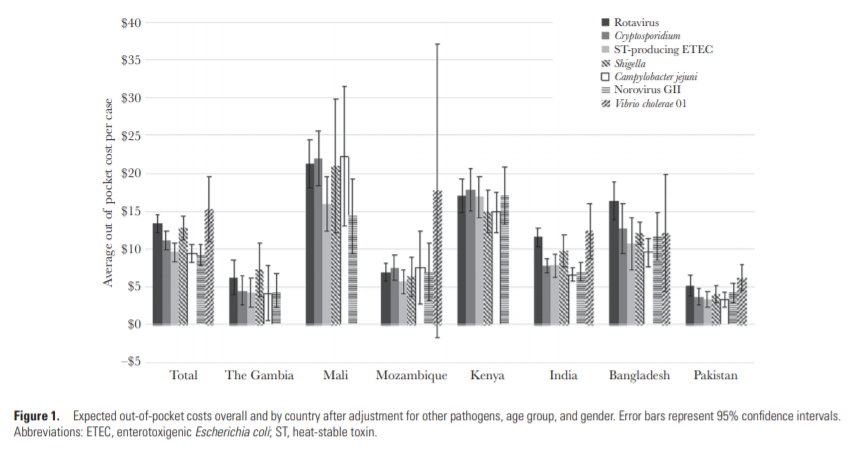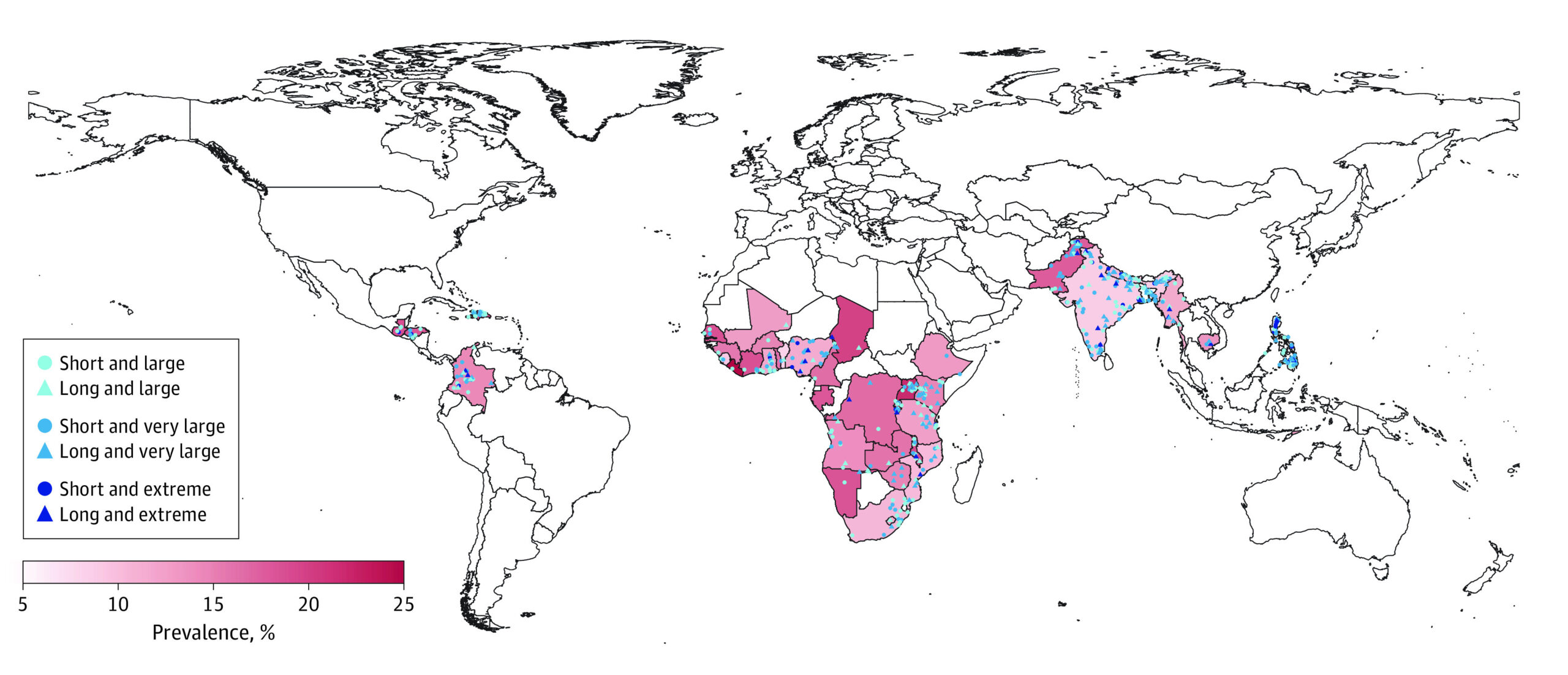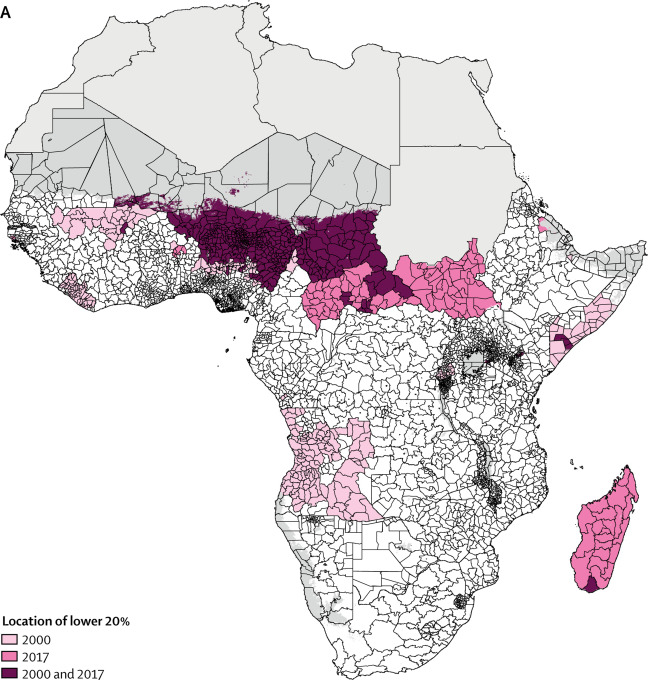
Household Costs of Diarrhea by Etiology in 7 Countries, The Global Enterics Mulitcenter Study (GEMS)

Childhood diarrhea can be caused by many different pathogens, and while there are many overlapping characteristics, infections can vary in severity, duration, clinical manifestations, and long-term consequences according to the causal pathogen. These differences can in turn impact the economic burden on patients and their families. This study, published in Open Forum Infectious Diseases, aimed to evaluate the household costs of diarrheal disease by 7 pathogens in 7 countries (Kenya, Mali, Mozambique, The Gambia, Bangladesh, India, and Pakistan) using data from the Global Enteric Multicenter Study (GEMS). The 7 pathogens compared by cost were:
- rotavirus;
- Cryptosporidium;
- heat-stable toxin (ST)–producing enterotoxigenic Escherichia coli (ETEC);
- Shigella;
- Campylobacter jejuni;
- norovirus GII; and
- Vibrio cholerae O1.
The study found that household out-of-pocket costs were higher in Mali than any other country. Within countries, however, household cost differences between pathogens were minimal and not statistically significantly different.
Despite data limitations of this study, understanding pathogen-specific household costs (or lack thereof) is useful, as decision-makers could consider broader illness cost information and its relevance to a particular pathogen’s economic burden and contribution to poverty when deciding which pathogens to target for interventions.


